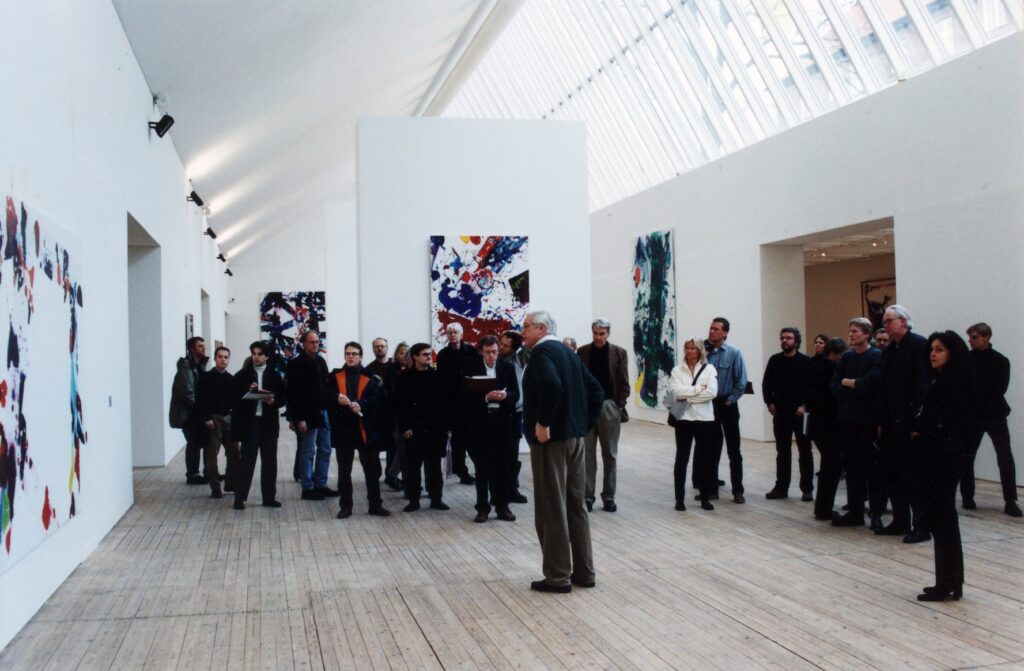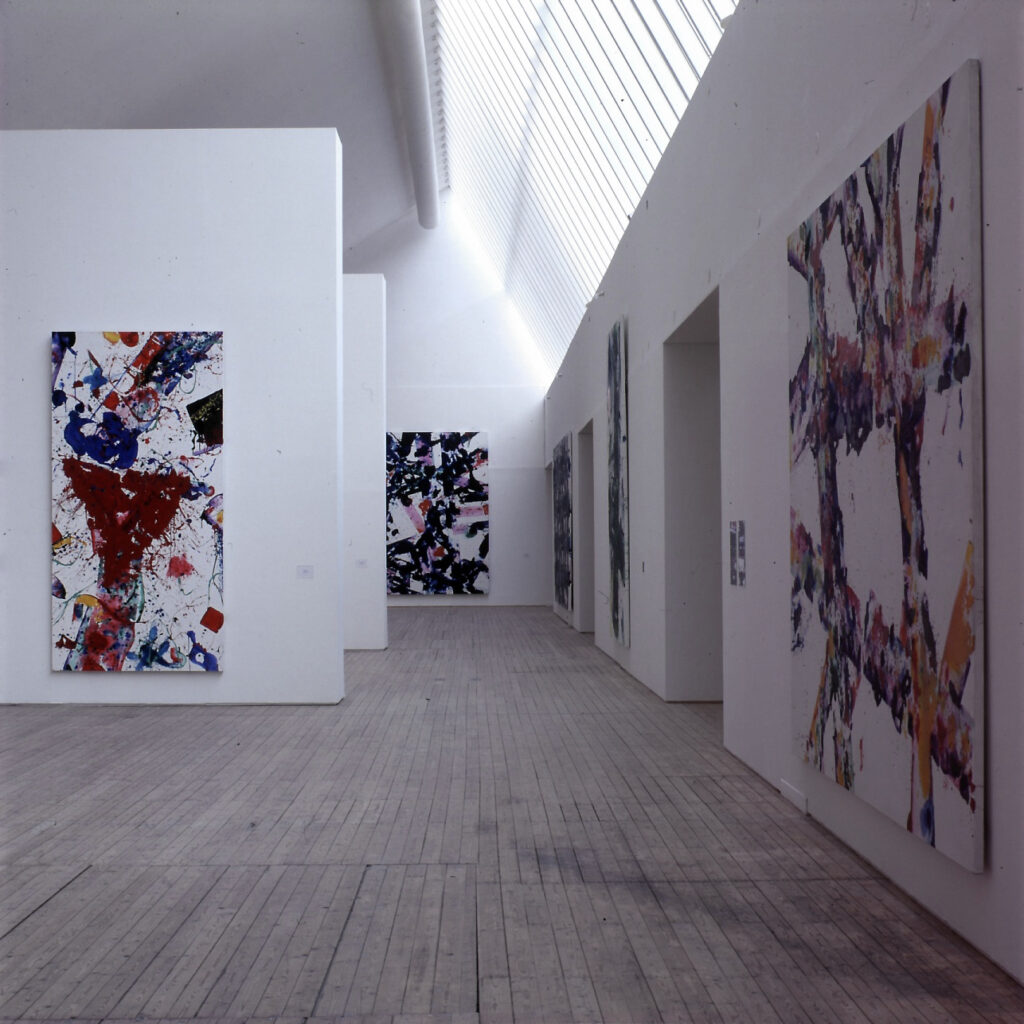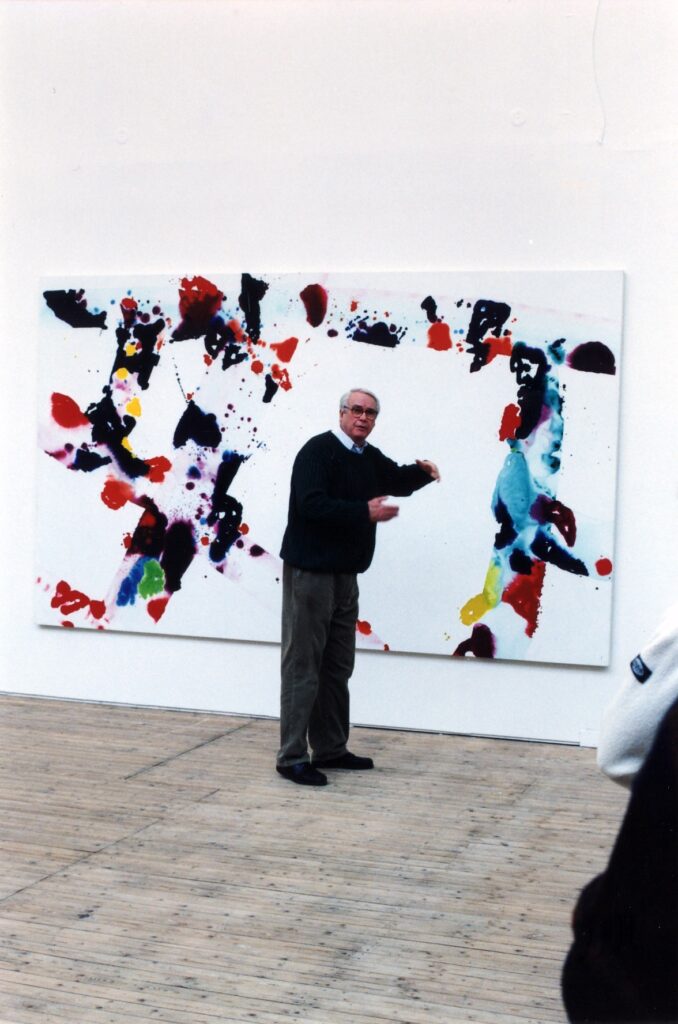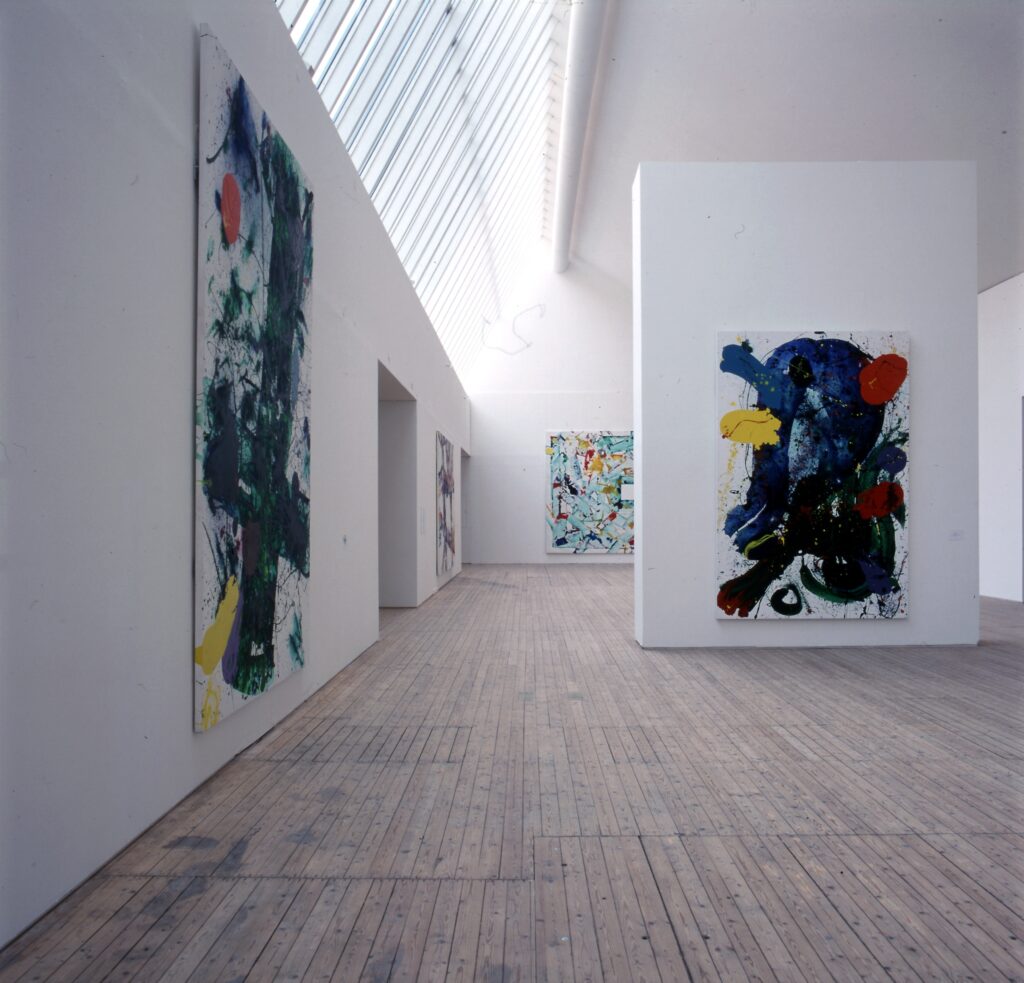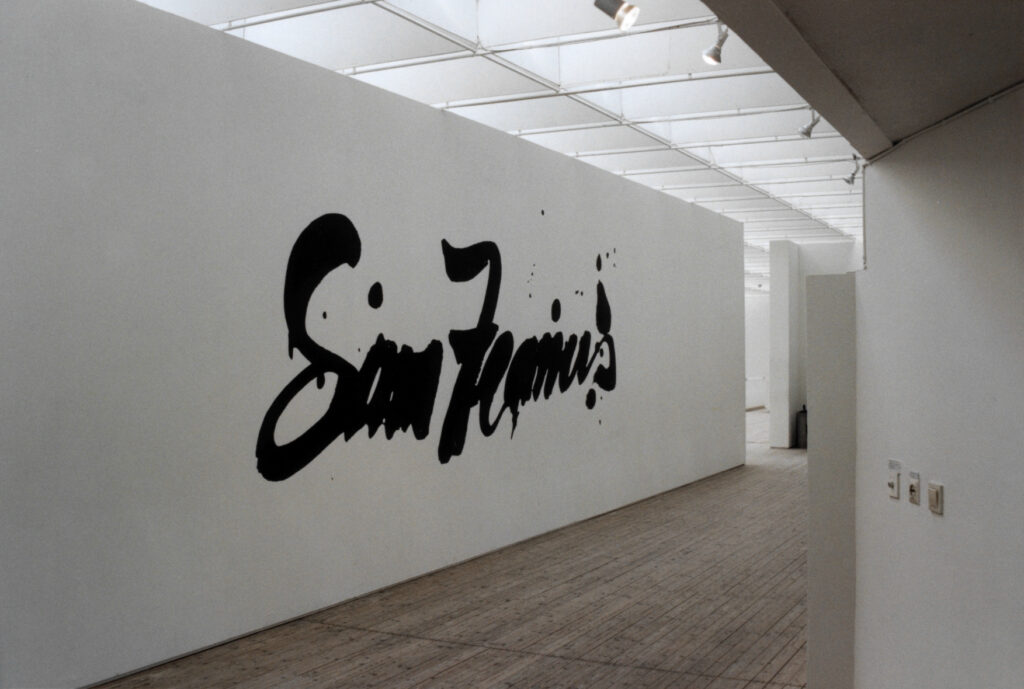
Sam Francis – Paintings 1947–1990
29.1 2000 – 1.5 2000
Sam Francis: Paintings 1947–1990 was a comprehensive retrospective exhibition that showcased one of the most influential American artists of the postwar period and traced his development throughout a long and productive life.
Sam Francis’s works testified to his faith in the power of abstract painting and color’s ability to express deeply personal experiences. He began painting during a three-year hospital stay in the mid-1940s. Throughout his adult life, he was plagued by illness, and time and again, painting became a way back to life.
His paintings were built on two fundamental elements: space and color. “Color,” he said himself, “is for me the real substance, the starting point that excludes both drawing and contour.” Already in the 1950s, in his native California, he began to dissolve the representational image and pushed his painting towards an ever higher degree of abstraction. Colors such as black, gray, red, and blue dominated.
When Sam Francis arrived in Paris in 1950, he was deeply influenced by the city’s light, so different from California’s blue skies. The paintings from his early years in Paris were suffused with a “heavenly beautiful gray,” a veiled light that shaped the space and expanse over the city into a vast dome. Mist-like streaks and patches of color lay like translucent curtains of flower petals — never pure white, but pale reds, greens, and blues. The paintings became atmospheric and completely infused with light. His fascination with light and space likely stemmed from his pilot training during World War II. In his images, one could experience the sensation of flying — rising through clouds and gliding through an untouched reality that surrounded everything.
Soon he came into contact with the paintings of Cézanne, van Gogh, Matisse, and especially Bonnard. These encounters guided him in a direction toward light and color. He was strongly influenced by Monet’s late water lily paintings — where color seemed to be in constant flux. By the mid-1950s, he once again pushed color to intensity: reds, yellows, blacks, and above all blue, with a luminosity that recalled the stained glass windows of medieval cathedrals. During the following decade, blue would dominate his increasingly large canvases.
The white color played a central role in his work. Around 1955, it appeared as small openings or cracks between the intensely colored areas — not as a background, but as a unifying force. The white tied the fields of color into a curtain dropped in front of the viewer, concealing a space hinted at beyond the color. Toward the end of the decade, white took up an increasingly larger space and assumed a more active role in the painting. The vibrant color fields broke apart and floated in a sea of light, crossed by thin, flowing lines of color. Space was restored — the room became perceptible.
After two trips around the world, he settled in 1962 in Santa Monica, Los Angeles, but kept his studios in Paris and Bern. His paintings changed once again. White retained its dominance in the Blue Balls series, where the previously angular color fields were replaced by irregularly round shapes that floated in space and faded into an endless white expanse.
In the mid-1960s, he pushed the color toward the edges of the canvas — blue, yellow, red — where it formed a thin border around an evenly white-painted center. The white space, enclosed by color, articulated the extension of the room between the matter. Light was at the center, dissolved into its components.
In the 1970s, he drew inspiration from Eastern mysticism, as well as from Byzantine mosaics and Romanesque frescoes, where light — the divine — emanated from the center of the image. White became an inner light and the focal point of the paintings, often shaped as a square — a symbol of white as the sum of all colors.
At the end of the decade, he gathered color into broad bands that crossed the surface of the painting diagonally, vertically, or horizontally. A network spread across the canvas, but space remained in the white, which shone through the deep reds, blues, and greens.
After 1980, Sam Francis broke apart the structures of his earlier work. With an artistic confidence built on decades of experience, he freely explored different materials, scales, and techniques. He blurred the boundaries of what painting could be and reached a stage where color — always, for him, an embodied emotion — took on the very substance and force of nature itself.
